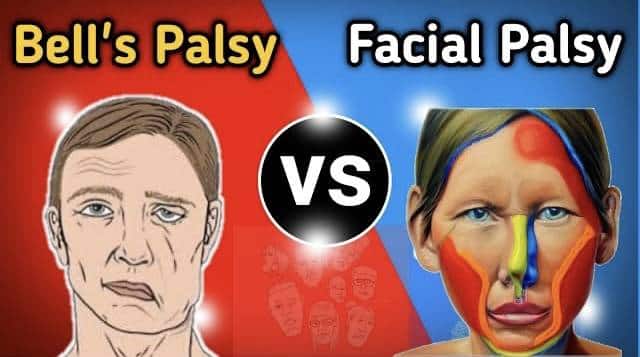Bell’s palsy and facial palsy
Bells palsy and Facial palsy difference – Both of the above terms that are often used interchangeably to describe paralysis or weakness of the muscles on one side of the face.
Facial Palsy:
Facial palsy is a broad term that refers to paralysis or weakness of the facial muscles. It can be caused by various factors, including infections, trauma, tumors, or neurological conditions.
Facial palsy can affect either one side (unilateral) or both sides (bilateral) of the face.
The severity and extent of facial muscle involvement can vary depending on the underlying cause.
Bell’s Palsy:
Bell’s palsy is a specific type of facial palsy that is characterized by sudden, temporary weakness or paralysis of the muscles on one side of the face.
The exact cause of Bell’s palsy is not fully understood, but it is believed to result from inflammation and swelling of the facial nerve, which controls the muscles of the face.
Viral infections, such as the herpes simplex virus, are thought to play a role in the development of Bell’s palsy.
It typically affects only one side of the face and can cause symptoms
such as facial drooping, difficulty closing the eye, drooling, and changes in taste perception.
Certainly! Here are some additional details about Bell’s palsy and facial palsy:
Causes:
- Bell’s palsy: The exact cause is unknown, but it is thought to occur when the facial nerve, which controls the muscles of the face, becomes inflamed or swollen.
- Viral infections, such as the herpes simplex virus, are believed to trigger the condition, although other factors like immune system dysfunction or genetic predisposition may also play a role.
- Facial palsy: Facial palsy can have multiple causes, including infections
- such as Lyme disease, trauma or injury to the face, tumors, stroke, certain neurological conditions (e.g. Guillain-Barré syndrome) or even congenital abnormalities.
Symptoms:
- Bell’s palsy: The main symptom of Bell’s palsy is sudden weakness or paralysis on one side of the face.
- This can cause drooping of the mouth, difficulty closing one eye, drooling, increased sensitivity to sound in one ear and changes in taste perception.
- Facial palsy: Facial palsy can result in weakness or paralysis of the muscles on one or both sides of the face.
- It may affect the ability to close the eye, smile or make facial expressions.
- Other symptoms can include drooping of the mouth, excessive tearing or dryness of the eye and loss of taste sensation.
Treatment:
- Bell’s palsy: The treatment for Bell’s palsy often involves medications to reduce inflammation and swelling, such as corticosteroids.
- Eye care is crucial to prevent complications like dryness and corneal damage.
- Physical therapy exercises to maintain muscle tone and promote recovery may also be recommended.
- Facial palsy: Treatment for facial palsy depends on the underlying cause and severity.
- It may involve addressing the specific cause such as antiviral medication for viral infections or surgical intervention for certain tumors.
- Physical therapy including facial exercises and techniques to improve muscle strength and coordination is commonly employed to aid in rehabilitation.
Prognosis:
- Bell’s palsy: The majority of people with Bell’s palsy experience a complete recovery within three to six months, although some individuals may have persistent mild weakness or other residual symptoms.
- Facial palsy: The prognosis for facial palsy varies depending on the cause and extent of nerve damage. Some cases may resolve spontaneously or with treatment
- while others may result in long-term or permanent facial weakness.
It’s important to consult a healthcare professional for an accurate diagnosis and appropriate management of Bell’s palsy or facial palsy
As they can provide personalized recommendations based on your specific situation.
